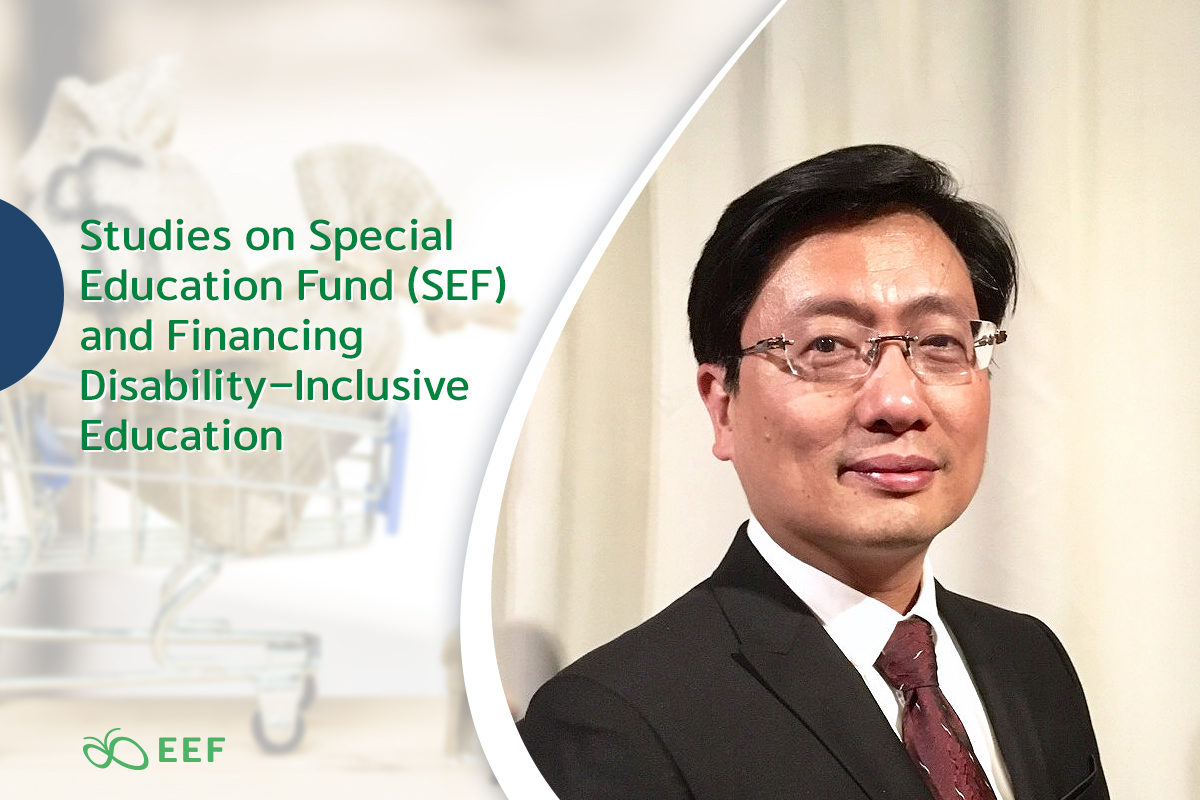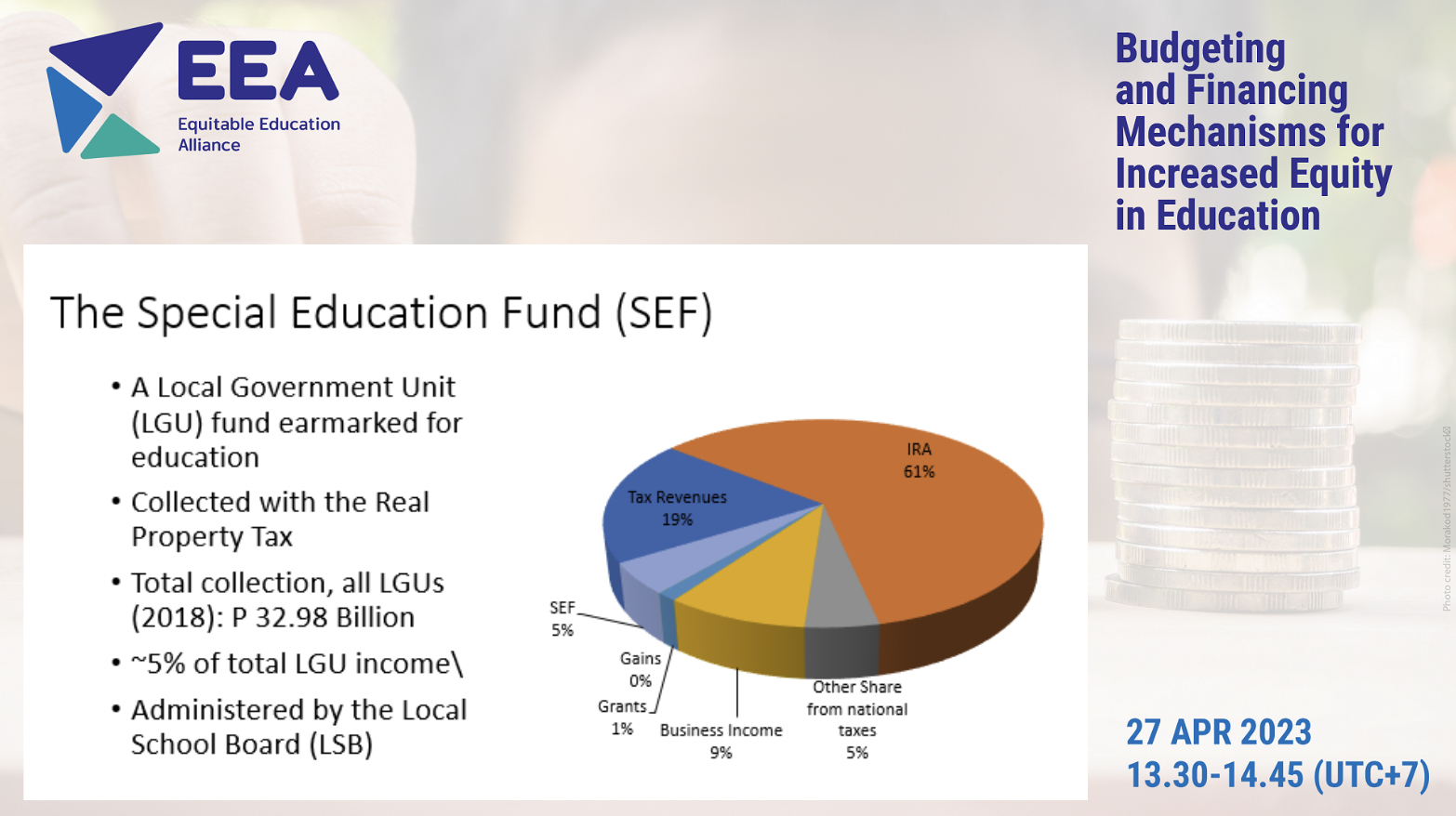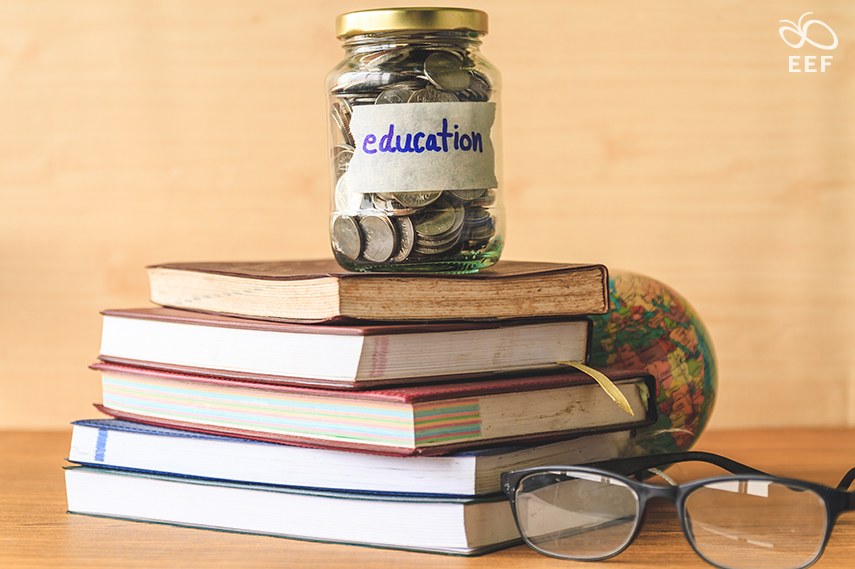
The 7th Meeting of Equitable Education Alliance Budgeting and Financing Mechanism for Equity in Education : Studies on Special Education Fund (SEF) and Financing Disability–Inclusive Education
by Mr. Henry Grageda, Project Management Specialist (Education), USAID Philippines.
In this presentation, Mr. Grageda discusses the mechanism for financing basic education in the Philippines, focusing on how it is applied to financing disability-inclusive education in pilot areas. The Philippines has a school-aged population of around 33 million children, with about 23 million enrolled in public schools. There are nearly 50,000 public elementary and high schools, and the current classroom ratio is about one classroom for every 43 students. The Department of Education is a central agency administering public schools, and the major public funding is through the General Appropriations Act, an act of Congress or Parliament.

The Special Education Fund (SEF) in the Philippines is a local government unit fund earmarked for basic education, collected through real property tax. It accounts for about 5% of the local government unit income. It is administered by the local school board and the school division superintendent, making it both a financing and governance mechanism for education at the local level.
The Special Education Fund (SEF) represents only 6% of the public financing for basic education in the Philippines, and local governments collect it through real property tax. The SEF can be allocated to different types of expenditures at the local level and reflects the income disparity between regions. The SEF per capita distribution is wide among the 17 regional administrations, and the newly created Bangsamoro Autonomous Region of Muslim Mindanao has the lowest distribution of less than $1 per student. In contrast, the national capital region, Metro Manila, has over $120 per student yearly. This disparity is attributed to the structure of the SEF, which is pegged on actual property values, and regions with high property valuations tend to have more collection due to the presence of cities and industries.

The national government’s maintenance and operating expenses for the Department of Education have a uniform allocation formula with modifiers for the number of students, teachers, and income levels of the areas. This tends to smoothen out some disparities between national and local financing mechanisms. The graphic shows the orange bar reflecting the MOOE per capita transferred by the national government and the blue portion representing the per capita income. Small, local budgets balance the national allocations in certain areas, with some regions surpassing national allocations due to their income levels and property values.
The Local Government Unit (LGU) Special Education Fund (SEF) can be more finely allocated towards locally identified priorities because it is administered locally. The SEF can be used for special programs such as special education, early childhood care, and alternative learning. The local government can allocate the SEF for local priorities, even if it only accounts for 6% of the financing envelope for basic education.
The focus should not only be on the Special Education Fund but also on how it influences decision-making at the local level. Local governments with small SEF collections can still tap into their general fund to finance education. In some cities like Del Carmen, and Surigao, the ratio of financing from the local government’s general education fund to the SEF is ten to one. This is due to the ability of the local government to budget the SEF and allocate it to different priorities, resulting in greater local investments in education beyond the SEF.
Mr. Grageda manages a program to increase access to quality education for deaf-blind children. However, in 2022, it was concluded that equity-based financing mechanisms for disability-inclusive education still need to be improved.

The program aims to develop financing models through pilot programs in different municipalities in the country, and they are currently at level one of a five-block framework. A new law in 2022 mandates the inclusion of education for children with disabilities in financing from the Department of Education at the local level, which includes finding and building learning resource centers, training special needs teachers, and allocating the special education fund for children with disabilities. The program has successfully produced models adopted by local school boards, and the local law mandates the annual allocation of the special education fund for children with disabilities.
Mr. Grageda manages two projects related to disability-inclusive education financing in the Philippines, one of which is a region-wide research study that used the Philippines as a case study. He has worked with the Department of Education and local governments for 20 years, trying to determine how to allocate the budget. While he would like to have a model like Norway’s, he thinks that the democratization of the education budgeting process compensates for this. He also managed an ongoing disability-inclusive project and met with the Department of Education to bring the small pilot and what they have learned to local governments nationwide.
Source:
Studies on Special Education Fund (SEF) and Financing Disability–Inclusive Education, The 7th Meeting of Equitable Education Alliance Budgeting and Financing Mechanism for Equity in Education by Mr. Henry Grageda, Project Management Specialist (Education), USAID Philippines.
Meeting Record: https://fb.watch/kol16Cb9Dx/ & https://youtu.be/Prz-8xbFX9w
Further information about EEA: https://equity-ed.net/home/equitable-education-alliance/

